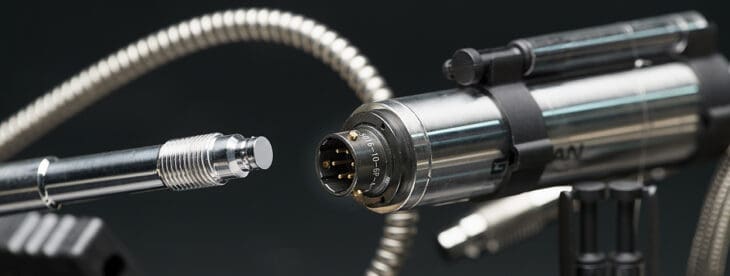
GEFRAN manufactures their melt sensors one of two ways: with extensometric filling fluid technology or with silicon piezoresistive technology. Whether fluid or fluid-free, their melt sensors are capable of detecting pressure up to 538 degrees Celsius. GEFRAN also offers four different designs: rigid stem, flexible sheath, flexible with thermocouple, and exposed capillary, and all four can be installed into any environment.
Gefran M3 Melt
Gefran M3 Melt pressure transducers the mercury-filled melt pressure sensors, designed by Gefran on an extensometric technology, are suitable to work at high temperature, up to 400°C, assuring a total compliance with the maximum levels of accuracy and of reliability. These pressure sensors output at mV / V output. These sensors are also a drop in replacements for other brands. Give us a call for a quote.
- Pressure ranges from: 0-35 to 0-2000 bar / 0-500 to 0-30000 psi
- Strain gage Wheatstone bridge
- Accuracy : <±0.25% FSO (H); <±0.5% FSO (M)
- Internally generated 80% calibration signal (R-Cal)
- Fluid-filled system for temperature stability
- Fully interchangeable with all existing brands
- Grade of protection: IP65 (6-pin connector version)
- 1/2-20 UNF, M18x1.5 standard threads; other types available on request
- Standard diaphragm is 15-5 PH stainless steel with GTP coating
- 17-7 PH corrugated diaphragm with GTP coating for ranges below 100 bar-1500 ps
- Other diaphragms available on request

M Series 4-20 mA output sensor
Mercury Free Sensors:
K Series 4-20 mA output sensor
Melt Sensors
Melt sensors are critical electronic devices used in extrusion and injection molding processes for polymers and plastics. They are critical, because they ensure that the entire extrusion or injection molding machine isn’t impacted by a sudden and drastic rise in pressure. A rise in pressure can cause machine failure, which then results in unpredicted downtime.
Usually, melt sensors are placed throughout machinery to create a closed-loop pressure monitoring system. They are usually found alongside the cylinder or crew, filter changer, gear pump, and/or extrusion head.
How Melt Sensors Work
These sensors are designed to operate under high-temperature conditions and measure existing pressure within an extrusion machine. That pressure is then converted into an electronic signal which is captured by the machine’s control systems.
Speak with an expert
Over last 8 years we have addressed 95% of inside sales quoting requests within 3 hours.
